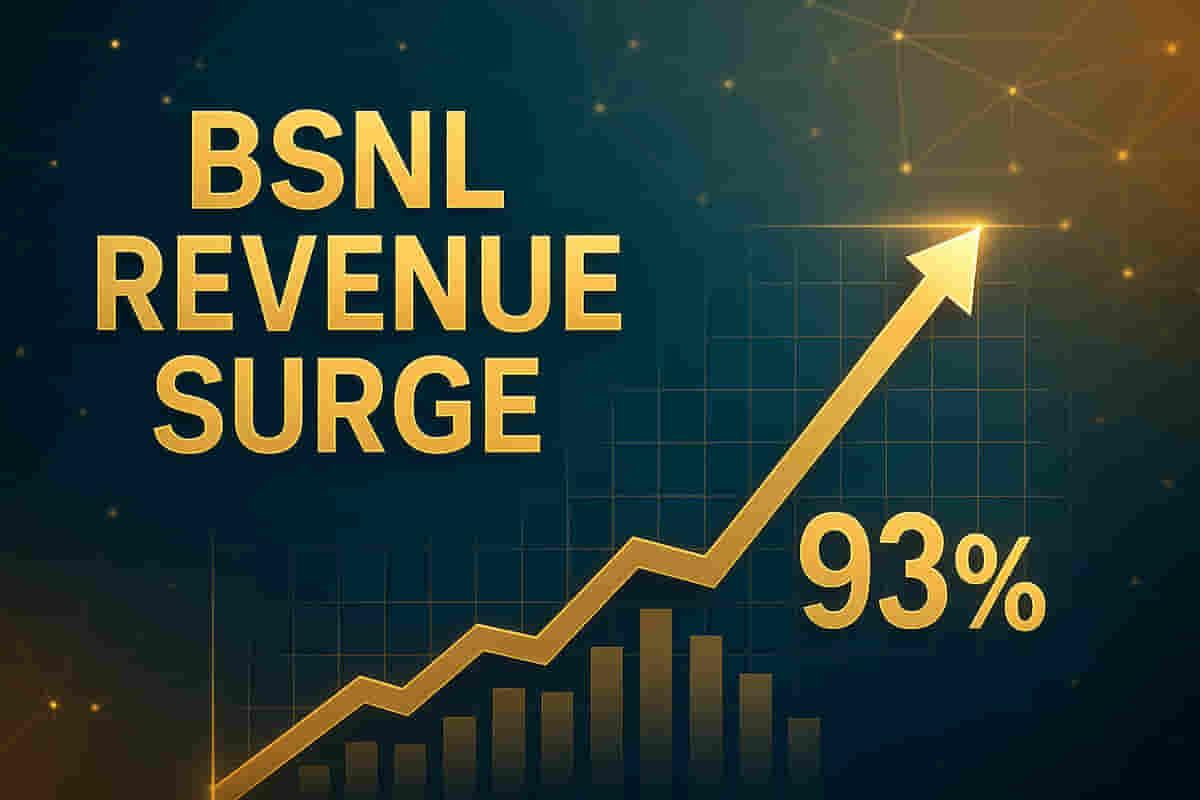BSNL Meets 93% Revenue Target in Q2 FY26, Shows Strong Performance
Telecom
|
30th October 2025, 9:58 AM

▶
Short Description :
Detailed Coverage :
Bharat Sanchar Nigam Limited (BSNL), the state-owned telecommunications company, has reported a strong performance for the September quarter of the fiscal year 2026. Union Telecom Minister Jyotiraditya Scindia announced that BSNL achieved 93% of its revenue target for the quarter, with actual revenue standing at Rs 5,347 crore against a target of Rs 5,740 crore. This indicates significant progress towards its financial goals.
For the first half of the current fiscal year (April to September), BSNL's total revenue amounted to Rs 11,134 crore. Looking ahead, BSNL has set an ambitious target to increase its revenue by 20% for the entire fiscal year 2026, aiming to reach Rs 27,500 crore.
A key highlight of BSNL's performance is the improvement in its Average Revenue Per User (ARPU). The ARPU increased by 12% in the second quarter of FY26, rising to Rs 91 from Rs 81 in the first quarter. This metric is crucial for evaluating the growth and profitability of telecom operators.
Certain regions, including Maharashtra, Kerala, Uttar Pradesh East, Andaman & Nicobar, and Jammu & Kashmir, have demonstrated exceptional ARPU levels, reaching as high as Rs 214. However, the minister also noted areas for improvement, pointing out lower ARPU figures (around Rs 60) in circles like Madhya Pradesh, Jharkhand, and Kolkata.
Impact This strong revenue performance and ARPU growth suggest BSNL is becoming more competitive and efficient. It could positively influence investor sentiment towards state-owned enterprises in the telecom sector and signal a healthier operational trajectory for BSNL, potentially leading to better service quality and expanded network capabilities. The company's focus on increasing ARPU is a key strategy for sustainable growth in a competitive market.
Difficult Terms: ARPU (Average Revenue Per User): This is a metric used by telecom companies to measure the average income generated from each subscriber over a specific period, usually a month or a quarter. It helps in understanding the revenue-generating capability per customer and is a key indicator of market penetration and customer spending.